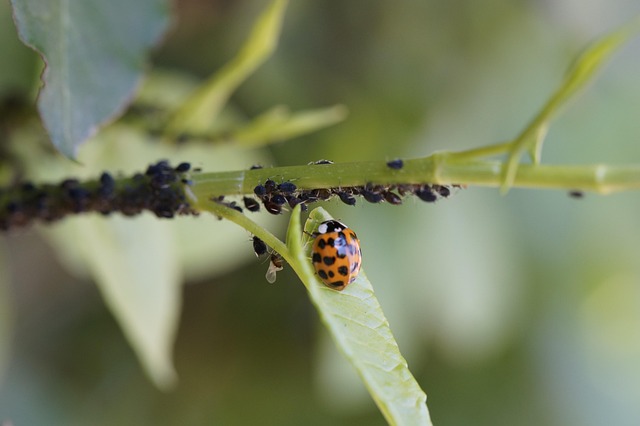Rodents like mice and rats pose significant challenges due to their adaptability and persistent nature. Effective rodent treatment solutions involve understanding their behaviors, sealing entry points, maintaining cleanliness, and using non-toxic baits or traps. Proactive pest management includes regular sanitation, sealing entry points, and implementing Integrated Pest Management (IPM) strategies like sticky traps and biodegradable bait stations. Innovative methods like CO2 traps, biological control, and smart monitoring systems offer eco-friendly alternatives to traditional pesticides. Sustainable pest control requires a multi-faceted approach integrating natural predators, regular monitoring, and specific rodent treatment solutions, along with good hygiene practices and professional collaboration for long-term management while minimizing environmental impact.
In the ongoing battle against pests, preventative treatments offer a sustainable and effective long-term strategy, especially for managing rodents. Understanding their behavior and the factors that attract them is key to success. This article delves into comprehensive rodent treatment solutions, exploring common preventative measures and innovative practices. We provide insights on best strategies for implementing sustainable pest control methods, empowering you with the knowledge to combat rodent infestations holistically. Discover how these approaches can lead to effective, long-lasting rodent prevention.
Understanding Rodent Behavior and Their Attraction to Environments
Rodents, such as mice and rats, are relentless in their search for food and shelter, making them highly adaptable and challenging to manage. Understanding their behavior is a crucial step in implementing effective rodent treatment solutions. These pests are attracted to environments that offer easy access to both sustenance and safety. They are adept at finding cracks, gaps, and openings in structures, often entering through seemingly insignificant entry points. Once inside, they thrive in secluded areas, establishing nests and food storage caches. Their nocturnal nature makes them less visible, further complicating early detection.
Knowledge of rodent behavior allows for targeted strategies. This includes sealing off potential entry points, maintaining clean environments with minimal food residues, and employing non-toxic baits or traps. By combining these methods, professionals can create an unappealing and inaccessible habitat, disrupting the rodents’ ability to survive and breed within a given area.
Common Preventative Measures for Effective Long-Term Pest Management
Pest management is a continuous effort, especially for long-term prevention. Implementing common preventative measures can significantly reduce pest infestations and ensure an effective, sustainable solution. Regular sanitation and maintenance are fundamental; keeping areas clean and clutter-free minimizes attractions for pests like rodents. Sealing entry points and gaps in walls or floors is another vital step, as it prevents pests from finding their way indoors.
Additionally, using traps and baits strategically can be part of an integrated pest management (IPM) strategy. Modern rodent treatment solutions offer humane and eco-friendly options, including sticky traps and biodegradable bait stations. These methods encourage a balanced approach to pest control, focusing on prevention and minimising the reliance on chemical pesticides.
Innovative Rodent Treatment Solutions: A Comprehensive Overview
In today’s world, innovative rodent treatment solutions are transforming long-term pest management. These advanced methods go beyond traditional traps and poisons, offering more effective, safer, and environmentally friendly alternatives. Modern technologies like carbon dioxide (CO2) traps, for instance, humanely capture rodents by filling enclosed spaces with inert gas, ensuring a quick and painless end for the pests without leaving behind toxic residues or causing secondary environmental harm.
Additionally, biological control methods, such as introducing natural predators like snakes or shrews, are gaining traction. This eco-friendly approach leverages the balance of ecosystems to manage rodent populations. Furthermore, the integration of smart sensors and monitoring systems enables precise identification of infestation hotspots, allowing for targeted applications of treatments, minimizing waste, and maximizing efficiency. These comprehensive rodent treatment solutions not only mitigate immediate pest issues but also contribute to sustainable long-term strategies for pest management.
Best Practices for Implementing Sustainable Pest Control Strategies
Implementing sustainable pest control strategies requires a holistic approach that goes beyond immediate solutions. Best practices include integrating natural predators and implementing regular monitoring to prevent infestations. Utilizing eco-friendly rodent treatment solutions, such as non-toxic baits and traps, helps minimize environmental impact while effectively managing populations. Additionally, maintaining good hygiene and sanitation practices in and around the property creates a less hospitable environment for pests. Regular inspections are crucial to identifying potential entry points and signs of infestation early on, allowing for prompt action.
Collaborating with professionals who specialize in sustainable pest control can provide valuable insights and ensure compliance with local regulations. These experts can recommend tailored strategies based on specific pest types and the unique characteristics of the property. By combining these best practices, homeowners and businesses can achieve long-term pest management while preserving the health of their surroundings and reducing the reliance on chemical treatments.
In conclusion, a holistic approach to long-term pest management, with a focus on preventative treatments and understanding rodent behavior, is key to achieving sustainable results. By combining common preventative measures, innovative solutions like modern rodent treatment solutions, and best practices for implementation, individuals and organizations can effectively mitigate rodent infestations while minimizing environmental impact. Embracing these strategies ensures a harmonious coexistence with nature, protecting both property and ecosystem balance.
